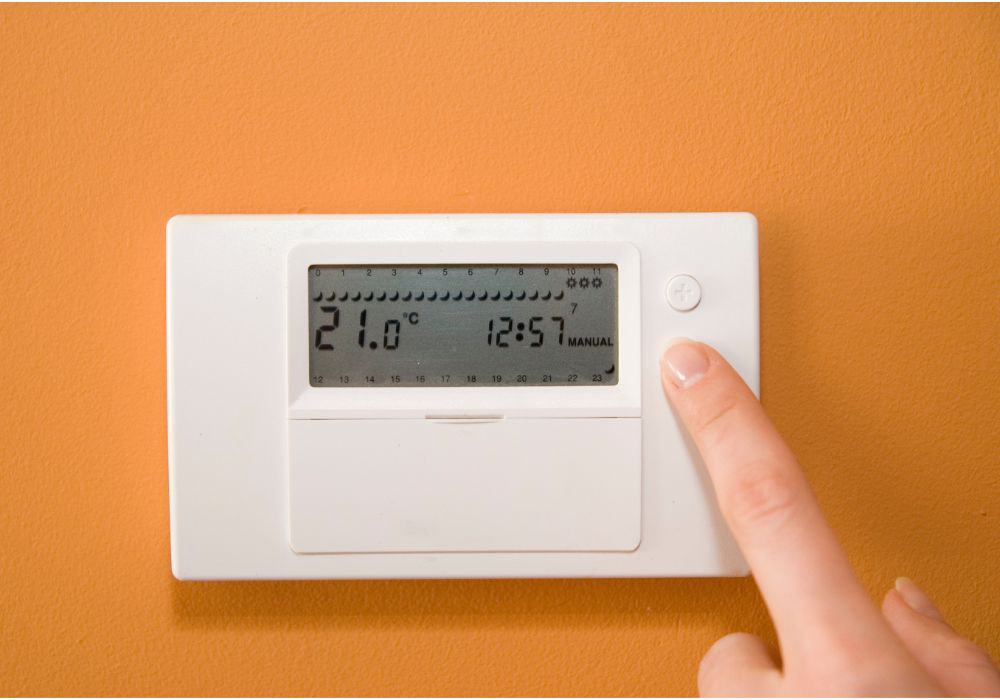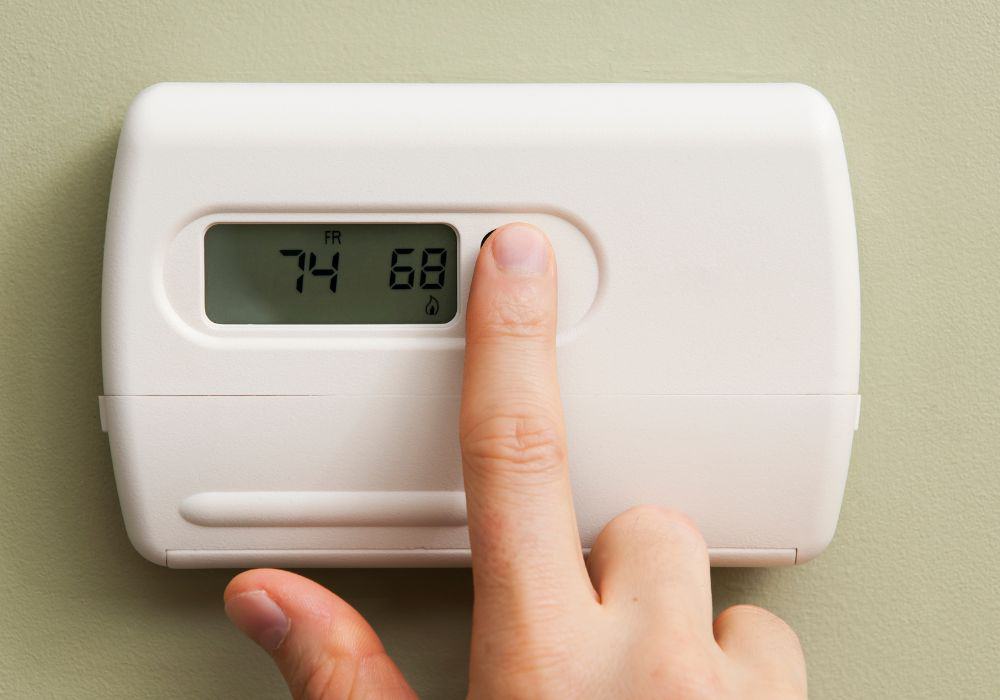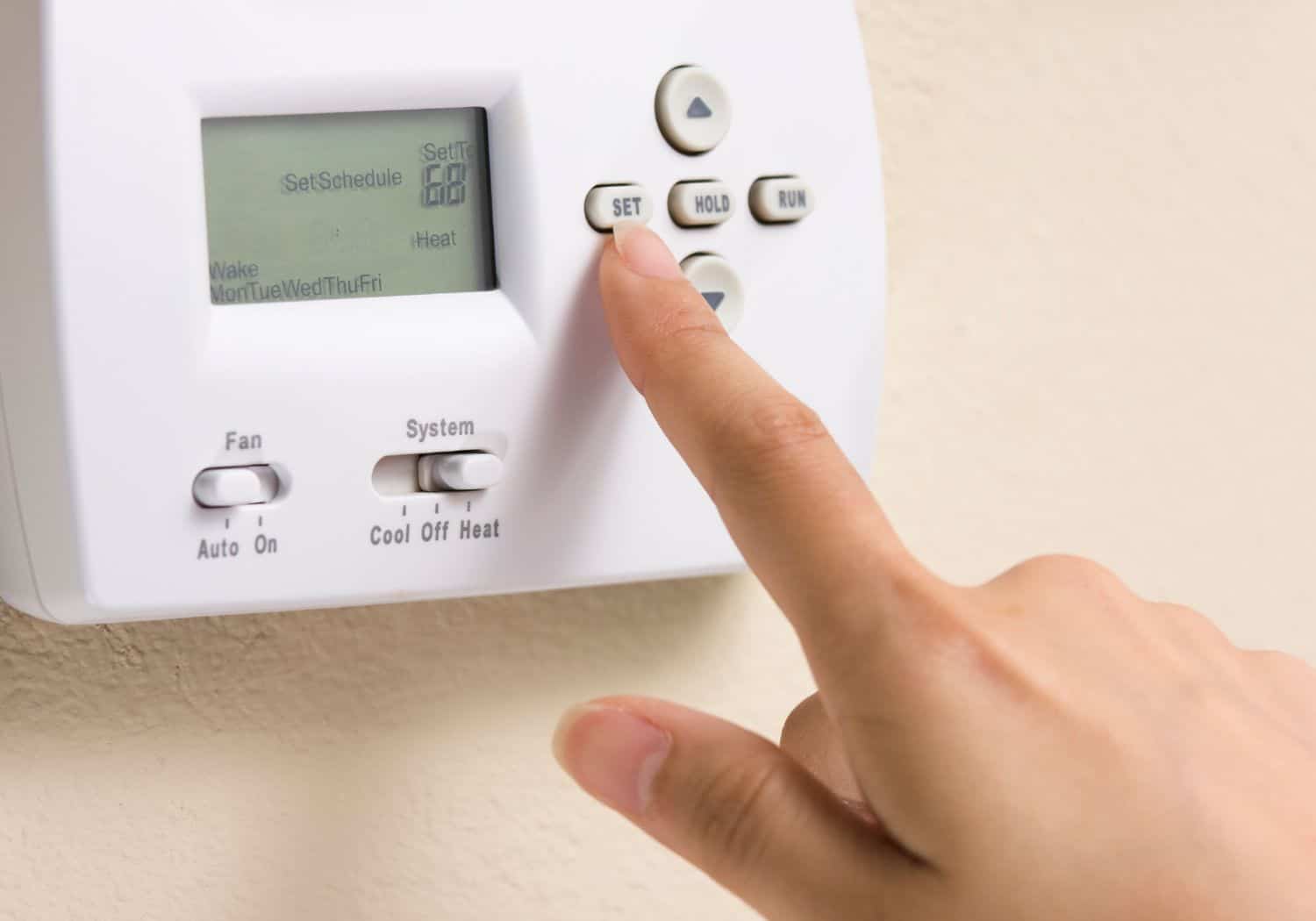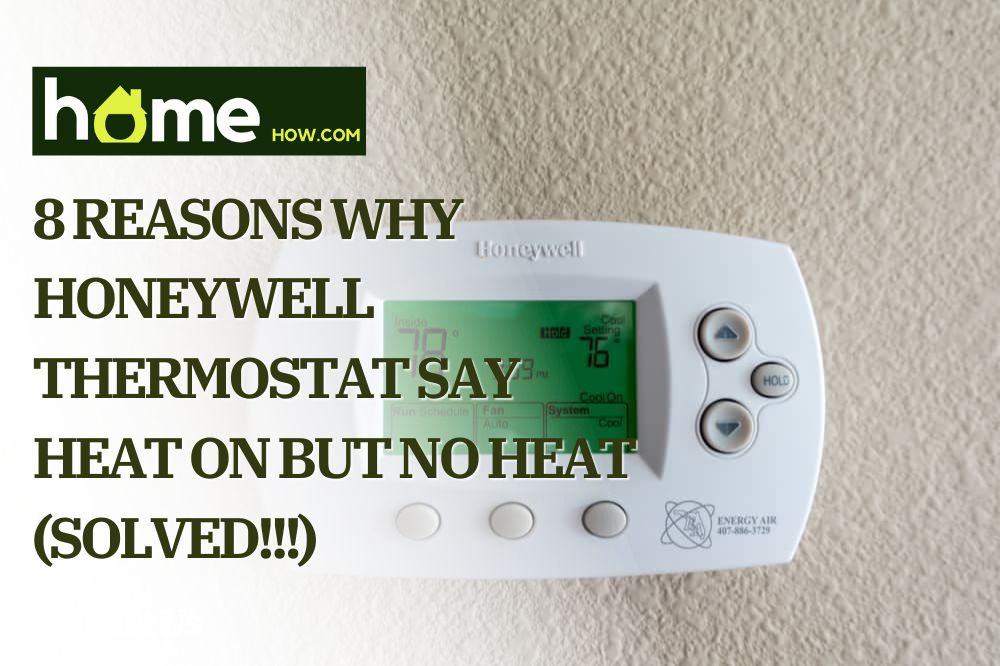People like to complain about how difficult life is in modern times because they often forget the advantages of this epoch. One of those advantages is being able to warm up or cool down with a push of a button. Our ancestors had to work a lot harder to have even a fraction of our comfort.
But no matter how much technology makes our life easier, sooner or later, there will be a malfunction, which can be temporary or permanent. In situations like this, it’s crucial to have a solution because when you have that, there’s no need to worry, right?
One of these malfunctionings we spoiled humans encounter is when the Honeywell thermostat says heat is on but no heat is coming through. Who likes to have this happen to them? You paid for all this fancy equipment, so you don’t have to deal with it yourself.
That’s where this article comes in handy. In it, we will show you what gives rise to the abovementioned situation. And not only that, but we will also teach you how to fix it. So let’s start!
Why Does Honeywell Thermostat Say Heat On But No Heat?
1. The Thermostat Is Set To The Wrong Temperature
When the Honeywell thermostat says heat on but no heat, people immediately start to panic, thinking that something has gone wrong. But, of course, in most cases, they are correct because if something is not faulty, why would it display such behavior?
But it is possible that “everything” is fine. One of the most common “problems” when it comes to this situation is that the thermostat is set to a temperature below the room’s current temperature. If this is the case, the furnace won’t start working even though the thermostat shows on.
See what temperature the thermostat is set to check if the problem is in the described situation.
2. Clogged Filters And Fan Blades

The next problem HVAC systems owners often encounter when the Honeywell thermostat says heat on but the heat is not coming is clogged filters and fan blades.
Since they work with air, filters and blades regularly come into contact with dirt and dust, so it’s not surprising that they experience this issue. If the previous tip didn’t help, it’s time to check them out.
If it turns out that the problem is really poor airflow due to congestion, you can replace the filter and clean the fan blades. In order for this not to happen to you often, you need to check them both regularly. Depending on how often you use the HVAC system, you will need to change the filter every one to three months.
Proper maintenance of filters and blades is important for another reason.
Of course, when you don’t get any heating at all, you immediately realize that you have a problem and try to solve it. But what happens when the airflow is blocked but not enough to stop working altogether? In that case, you will have to spend more energy on heating the home, resulting in more money spent.
If you don’t want to risk doing any further damage while changing and cleaning, it is better to call a professional.
3. Malfunctioning Sensor
The thermostat’s sensor might not turn on the heating because it “thinks” there is no need for it. When can that happen? Well, when it’s getting the wrong temperature reading. To check this, measure the room temperature and compare it with the reading on the thermostat. If they are not the same, the sensor is faulty.
4. Improper Or Broken Thermostat Wiring

Wiring a thermostat is not an overly complicated job since you don’t have to deal with hundreds or even dozens of wires. However, just because something is not complex does not mean it is impossible to do it wrong.
Improper wiring is another reason there is no heating even though the thermostat is turned on. So, how to solve this problem? The way you created it – by wiring. Or rewiring, to be more precise.
Wiring is done in two places to connect the thermostat to the furnace – on the thermostat and furnace, which means you will have to check both points to see if you accidentally connected one or more wires improperly.
In addition to the wires being hooked up incorrectly, it may also happen that the wire breaks. It will lead to the thermostat malfunctioning, so look out for this as well when you check the wiring.
For those who want to experience this adventure or perhaps want to learn how to do this, we give you this how-to guide by the Honeywell company. But just like with contaminated filters, you may not want to get your hands dirty. In that case, it would be best to call professionals and let them do that for you.
5. Dirty Pilot Ignitor
If you are sure that none of the problems described so far caused this situation and you have a gas furnace, then it is time to check the pilot ignitor. A dirty or congested ignitor will not ignite the furnace.
To check if this is the case, you need to turn off the furnace and take off its front panel. After that, take a look at the ignitor to see how clean or not it is. In the event it is dirty, you will have to call HVAC technicians and have them replace it.
6. The Circuit Breaker Or Power Switch Is Off
You have probably experienced power going out in one part of the house or only one device powered by electricity not working. If you do not hear the circuit breaker turning off, the first thought is that there is a power outage.
However, when you check another room or device, you see that everything is fine. Then you realize that the problem is in the circuit brake panel.
The described situation is one of the possible causes for the HVAC system not working. You can quickly solve this by checking whether the circuit breaker “in charge” of the thermostat is tripped or not.
This occurs in situations where something that can damage the circuit appears – excess of current, a power surge, or a faulty component – and is just a precaution. A tripped circuit breaker or a blown fuse is infinitely better than the whole system going to pieces.
However, if this situation keeps repeating, it is a sign of a bigger problem, which is when you should have it looked at.
In addition to the circuit breaker tripping, it can also happen that the power switch on the furnace is turned off.
What causes this? Well, it is possible that you simply forgot to turn the furnace back on when you last turned it off, but it can also happen that the furnace cover is improperly closed, which is why the furnace can’t start working.
Check the power switch and cover, and see for yourself.
7. There’s No Gas In The Furnace
Another thing that owners of gas furnaces should pay attention to is the gas supply. These types of furnaces use gas to heat the home, but if there is no gas, it is logical that the furnace will not be able to do its job.
The gas cut-off can happen due to unpaid bills, some work or repair on the gas network, problems in supply, gas valve left open, etc. However, if this occurs due to, for example, a broken pipe and you smell gas, leave the premises immediately and call for help. Don’t play with (potential) fire!
8. Low Battery

Since batteries in thermostats can last up to a year, many people forget about their existence or that they play any kind of a role in all of this. They not only “give life” to the thermostat but also help retain settings that would otherwise be wiped out during power outages.
However, sooner or later, the batteries have to die, which is another possible cause of the problem we are discussing in this article.
If the heating does not work despite the fact that the thermostat shows that it is on, try changing the batteries and see if that will solve your issue. Of course, you should change batteries that have been in use for several months, like seven or more.
Another thing we should mention here is that many thermostats will show you when your battery is low. If the “lo batt” warning is on, it’s definitely time to change the batteries.
Conclusion
Honeywell thermostat saying the heat is on but no heat coming is an inconvenient problem that no one wants to have on their hands. Luckily for you, in this article, we have listed eight possible causes of this and how to solve each of them. Repetition is the mother of learning, so let’s go through them one more time quickly.
Starting with the easiest, check the thermostat’s temperature; if it is lower than room temperature, the furnace won’t activate. Two more easy ones are inspecting the status of the battery in the thermostat and the state of the circuit breaker and furnaces power switch.
Then, when it comes to the dirty stuff, look at the filters, fan blades, and pilot ignitor. Gas furnace owners should examine the gas supply as well. The last two things that could cause this problem and you to check are the thermostat’s wiring and the temperature sensor.
